GBD 2017: Health Sector Spending and Spending on HIV/AIDS, Tuberculosis, and Malaria, and Development Assistance for Health
2020
This article from The Lancet estimates domestic health spending and spending on HIV/AIDS, tuberculosis, and malaria to examine progress towards Sustainable Development Goal (SDG) 3—aiming to ensure healthy lives and promote wellbeing for all. Global health spending has increased since the implementation of the SDGs in 2015, with $7.9 trillion spent in 2017, and spending is expected to grow to $11.0 trillion by 2030. Spending related to Development Assistance for Health (DAH) was $40.6 billion in 2019, with HIV/AIDS receiving the highest contribution since 2004. Pandemic preparedness made up only one percent of DAH spending in 2019 and was allocated $374 million. Spending in low- and middle-income countries (LMICs) towards HIV/AIDS, tuberculosis, and malaria in 2017 was $20.2 billion, $10.9 billion, and $5.1 billion respectively. While spending has increased across these infectious disease areas since 2015, spending has not increased in all countries and disease outcomes have been mixed.
Led by the Institute for Health Metrics and Evaluation (IHME) at the University of Washington, GBD is a global effort with researchers from over 150 countries and territories. IHME and other partnering organizations have developed numerous resources to disseminate and visualize the findings of the GBD studies, data visualizations and interactives, country profiles, policy reports, research articles, infographics, and the GBD Results Tool, which allows users to search GBD data.
Source:
Global Burden of Disease Health Financing Collaborator Network. Health Sector Spending and Spending on HIV/AIDS, Tuberculosis, and Malaria, and Development Assistance for Health: Progress Towards Sustainable Development Goal 3. The Lancet 2020; 396: 693-724. DOI: https://doi.org/10.1016/S0140-6736(20)30608-5.

